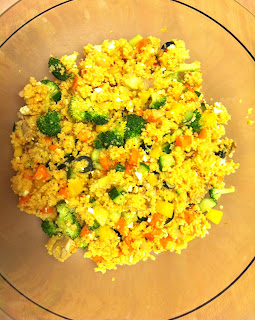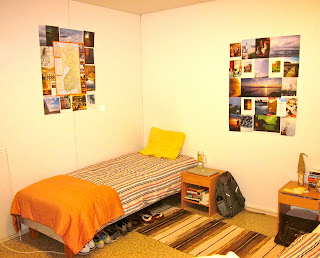Living in Finland has been a huge change for me and
sometimes it’s hard to shake the feeling of being a fish out of water. I’ve lived
in California my whole life until this point, always within comfortable
proximity to a wonderful network of friends and family. Thankfully technology
makes it possible to stay in contact with people back home and I’m living with
some Cal Poly students, which keeps things a little more familiar. However, life in Finland is anything but
normal.
The one glaring difference is the language barrier. We’re
learning Finnish slowly and most people speak some English but many people are
shy to use it. This hesitance in
combination with not having classes with any Finnish students makes it more of
a challenge to make new friends. We go
to school with many nice people who talk to us but being a small pack of
exchange students makes it hard to integrate with the student body. However,
there are student events that help us maintain relationships and build new
ones. The friends we have introduce us
to more of their friends and it’s easy to get along with people once they get
past their nervousness about speaking English. I’ve never been the kind of person to be
homesick but knowing all my friends at Cal Poly are excited to be returning to
San Luis Obispo for school this week makes me a little nostalgic.
Another big challenge I face here personally is the lack of
routine. I don’t understand why I have a
hard time embracing the spontaneity of our schedule; at home I often feel bound
by my packed agenda. Coming here has
made me realize how much I rely on a rhythm of productivity that I can pace
throughout the week. Our studies in
Finland are constantly changing, which is great because we are always doing
something fun and different. We go on many field trips, have planned work
experience days and class meetings are scheduled around the assortment of
activities in our program. Though we get
a schedule every week, we often don’t know exactly what a class outing or
workday will entail. I did not realize
how neurotic I am about charting my day until now and I’m floored! I like to consider myself a laid back person
who has no problem going with the flow but I’m starting to realize that might
not be the whole truth; I rely on a certain level of control. Another thing I’ve learned about myself;
having dirty feet (or dirty floor) drives me up the wall. I think I’m turning into my Mom.
Okay, I’m done whining for now. Obviously I didn’t come to
Finland because I want to live like I have my whole life in California. This is a life changing experience and I promise
I’m embracing it; the good and the bad and the strange alike. I’ve been doing a
few different things to maintain a level of comfort as well as stabilizing
sense of self; exercising, cooking and expressing. (Now I know I’m turning into
my Mom. Yes, it’s a good thing). All three
things they are all connected in one way or another but two of these things are
inseparable to me; cooking and exercise.
Eating is probably one of my favorite things to do in the whole wide
world. I heard before traveling that
Finland eats a lot of meat and potatoes.
This is true. I’ve also probably never eaten so much cheese in my
life. To combat the amazingly cheap but
chalorically dangerous school lunches, I’ve been trying to cook healthier at
home while still satisfying my hunger.
Our kitchen is limited in pots, pans, tupperware, and I have a budget to
keep. Solution? The one pot meal. This
is something I love doing at school when I want to have something warm on hand for
a few days that has everything I need; carbs, protein and veggies. Most recently I made a delicious Cous Cous
creation and fried rice (pictured below), both with chicken and many different
vegetables. You may be thinking this doesn’t sound extremely healthy but that’s
where the exercise comes in. I’ve been trying
to work out four or five times a week; running or if it’s raining, going to the
school gym for sprints, stationary biking and strength training. Every time I ask Sepo, the extremely helpful
man at the front desk, to unlock for the gym for me he asks, “Get power?” and I
just love that! Not only does exercise
release endorphins, I also use it as license to eat guilt-free when I’m hungry,
which is priceless in my book.
An additional outlet I use to maintain some balance is expressing
myself, which can be done in many different ways. Communicating with my roommates and people
back home is one common method of grounding myself. I feel very lucky to have
people supporting me all over the world and though I value my independence,
I’ve always gotten by with a little help from my friends and family. Another way of taking my mind off life is to
create something enjoyable. This time
I’m not talking about food, I’m talking about turning a blank wall into
something you don’t mind looking at.
Last week the walls in my room looked painfully dull so I used a Swiss
army knife (thanks, Grandpa), some packaging tape and the millions of Finland
brochures I have sitting in a drawer to make a couple posters. Suddenly, the room is infinitely more enjoyable! It also distracts from the unexplained musty
cat smell. Luckily you can’t smell the pictures of my room posted below.
When I’m lacking the energy to work out or make something, I
enjoy reading, listening to music and enjoying the sauna on campus. A trip to the sauna can be a little strenuous
but provides incredible stress relief. One
other way we exchange students are adding some fun to our weeks is by having a
Sunday “family dinner.” This week we
rode our bikes to the forest where our assigned Silviculture stands are to take
some measurements for our project. After helping each other measure and record
we roasted sausages and pineapple around a fire pit drinking beer. George, the Czech student that joined us last
week, said as we were cooking our dinner, “I really like this moment.” We all smiled and agreed life in Finland is
pretty awesome.
Simply writing this blog helps me organize my thoughts and
focus on the big picture instead of small details like dirty feet and smelly
rooms. This week Anna Tall gave the
exchange students a little pep talk about adjusting to life in Finland. She mentioned how it’s easier to be in your
home country where, “you don’t have to think as much,” being so comfortable living your everyday life. As you cross borders you start to think differently and gain new
perspectives about world because you are exposed to different things and face
new challenges all the time. She can relate to how we feel because her family
moved to Kansas from Finland for over half of this year before we arrived. I’m
learning more about myself, the world, and human nature everyday on top of the
incredible education I’m enjoying at the university. We have already had so many unique
opportunities and wonderful experiences; I’m looking forward to many yet to
come. Attitude is everything, I don't intend to waste any of my time here with a bad one.
 |
| Cous cous |
 |
| Fried rice |
 |
| My forestry stand bordered by a logging road |
 |
| Happy campers! |

































